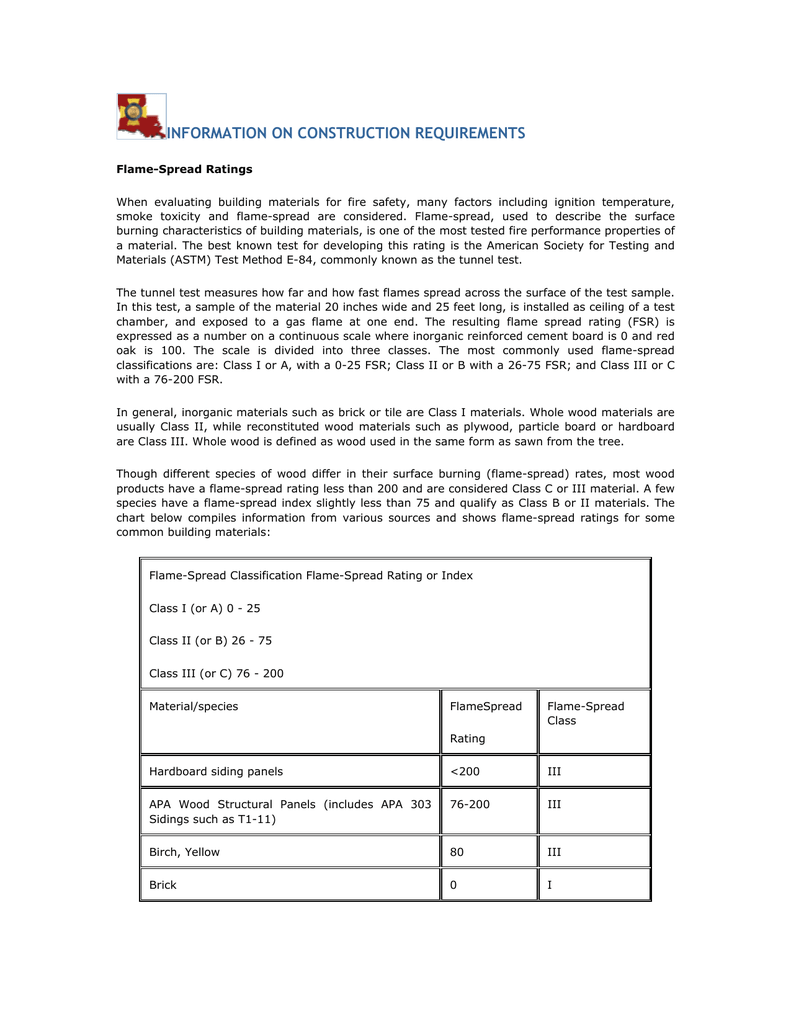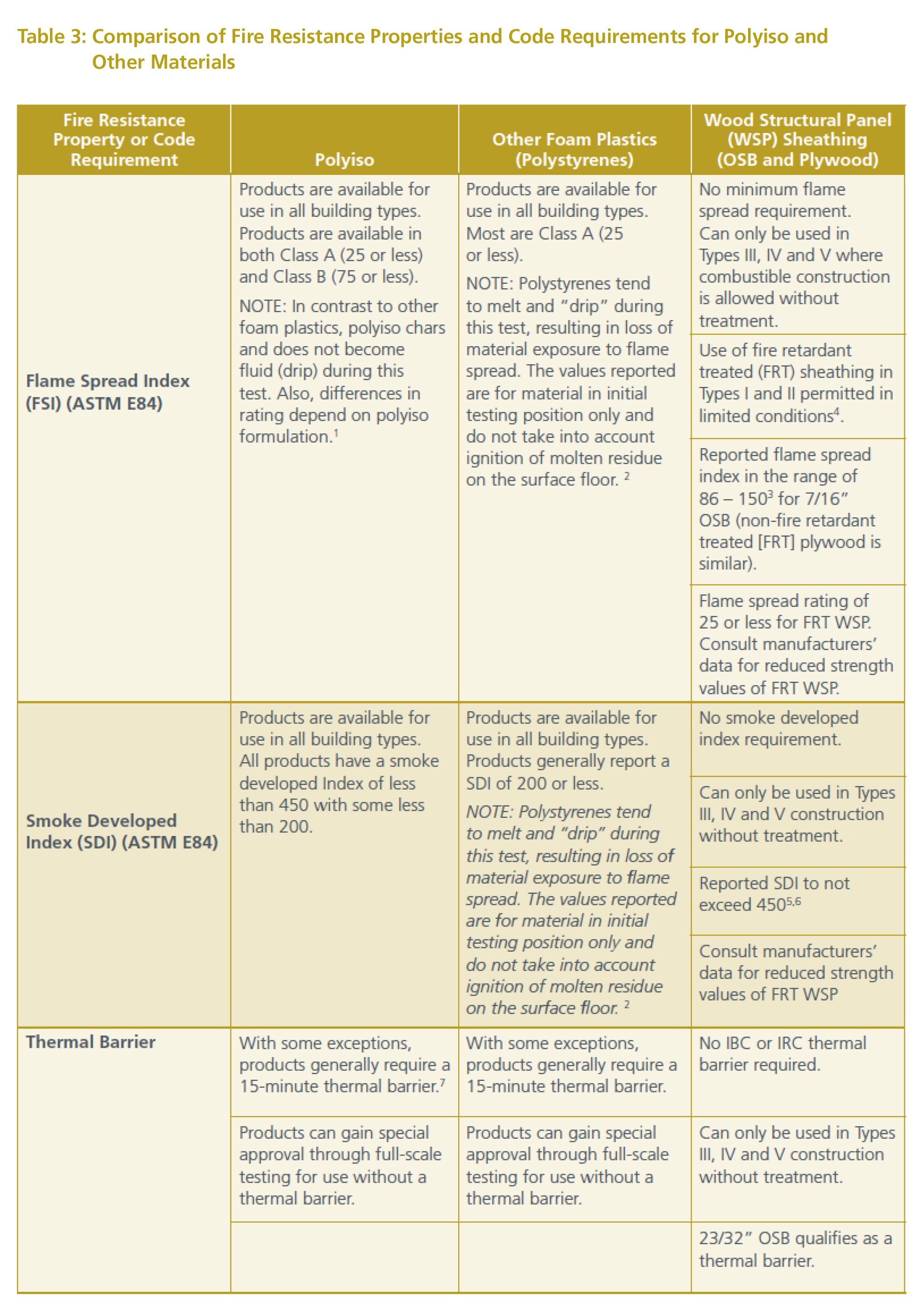The slope of the test specimen is preselected and since steeper slopes are more of a challenge due to melting material feeding the fire the rating applies to the maximum slope passed.
Flame spread index for class a roof.
The maximum flame spread is 6 feet for a class a rated roof 8 feet for class b and 13 feet for class c.
Class a products will not generate excessive visibility obscuring smoke an important factor in designing safe egress for building occupants.
The flame spread categories are as follows per astm e 84 ul 723.
To achieve a class a rating the roof must be effective against severe fire exposure.
Flame spread 26 to 75 other fr surface coatings class c or iii.
An fm class 1 designation means the roof assembly has been subjected to a series of tests in addition to external and internal fire exposure including wind uplift water leakage and impact resistance.
Flame spread and smoke development astm e84 in order to obtain the flame spread classification results must fall into a range between 0 and 25 to be class a 26 75 for class b and 76 200 for class c.
Class i or a with a 0 25 fsr.
In general inorganic materials such as brick or tile are class i materials.
The scale is divided into three classes.
Polyiso remains the only foam plastic insulation product for direct application to steel roof decks to earn fm approval for class 1 roof systems.
Class ii or b with a 26 75 fsr.
Gravel surfaced built up roofing and ballasted single ply systems usually meet class a while mineral surfaced roofings may be class b.
Smoke developed index 0 450 fire class a designation refers to material that may ignite but will not sustain a flame.
On very low slope commercial structures even a glaze coating of pure asphalt may meet class a flame spread.
Through the e 84 test both the flame spread index fsi and smoke developed index sdi are reported for a given sample.
Flame spread 25 or less frtw some fr surface coatings class b or ii.
Whole wood materials are usually class ii while reconstituted wood materials such as plywood particle board or hardboard are class iii.
Fsi is the measurement for the speed at which flames progress across the interior surface of a building while sdi measures the amount of smoke a sample emits as it burns.
The nature of the surfacing and the slope of the roof greatly affect spread of flame.
And class iii or c with a 76 200 fsr.
Class a or i.
This is proven if it can.
Fibrated coatings and asphalt emulsions retain the class a to higher slopes as do the fr modified and fr single ply systems.
Lexan thermoclear thermoclick and corrugated sheet products have a class a.
The most commonly used flame spread classifications are.
Flame spread index 76 200.
Class a roofing is the preferred choice for any home but this type of roofing is particularly important if you live in an area that is prone to wildfires.
Foam plastic used for insulating interior walls ceilings and floors of commercial buildings requires class i foam having a flame spread index of 75 or less in some circumstances 25 or less and smoke developed index of 450 or less.
Flame spread 76 to 200 untreated lumber and plywood.








